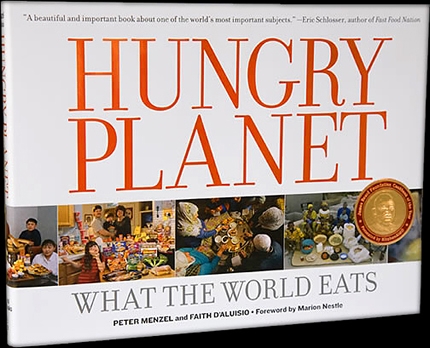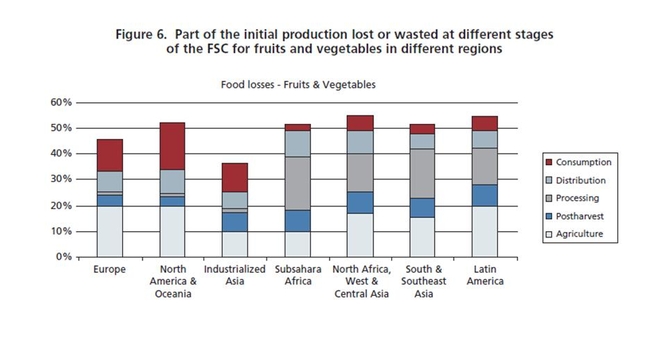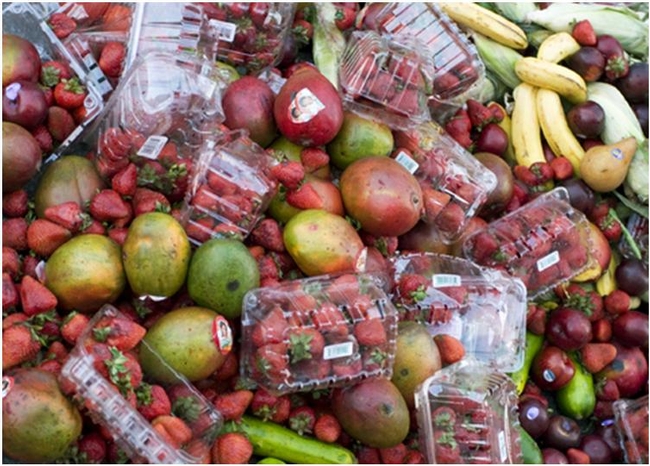What got me started on this contribution is a book I recently read, called Hungry Planet by Peter Menzel and Faith D’Aluisio. It photo-chronicles what an average family from different regions around the world eats in a week. Fascinating reading, but not the topic of this blog, just the inspiration.

The report does distinguish between loss and waste, pointing out that losses, which occur in production, harvest, postharvest and processing, are most prevalent in developing countries, whereas waste, which occurs at the end of the processing phase, is due to poor distribution and consumption habits, found in the industrialized countries. In developing countries, 40 percent of losses occur at post-harvest and processing levels while in industrialized countries more than 40 percent of losses happen at retail and consumer levels.

The report also points out that per capita waste by consumers is approximately 10 times greater in Europe and North America than it is in sub-Saharan Africa and South and Southeast Asia. Not surprising, just hard to hear.
We aren’t only wasting food when we throw out our fruits and vegetables. It takes time, money, energy, water and oil to generate produce. In fact, an article written for The Economist states, “Producing these wasted calories accounts for more than one-quarter of America’s consumption of fresh water, and also uses about 300 million barrels of oil a year.”
And, if that’s not enough what about the time and gas required to take it from the farm to the packing house to the shipper to the store to the home to the dump? And once it’s at the dump, rotting fruits and vegetables produce methane, a greenhouse gas 20 times more potent than carbon dioxide.

OK, OK enough with the lecture. What can we do?
- Raise your awareness of waste
- Assess what you have on hand before buying more
- Plan your meals and shop with a list to reduce over-purchasing (and go to the store with a full stomach!)
- Organize your fridge and counter so you know what you have
- Cook so that you don’t have too many leftovers
- Use your freezer
- Get creative with any remaining fruits and vegetables — recipes are abundant online
- Compost leftovers so you can grow your own fruits and vegetables